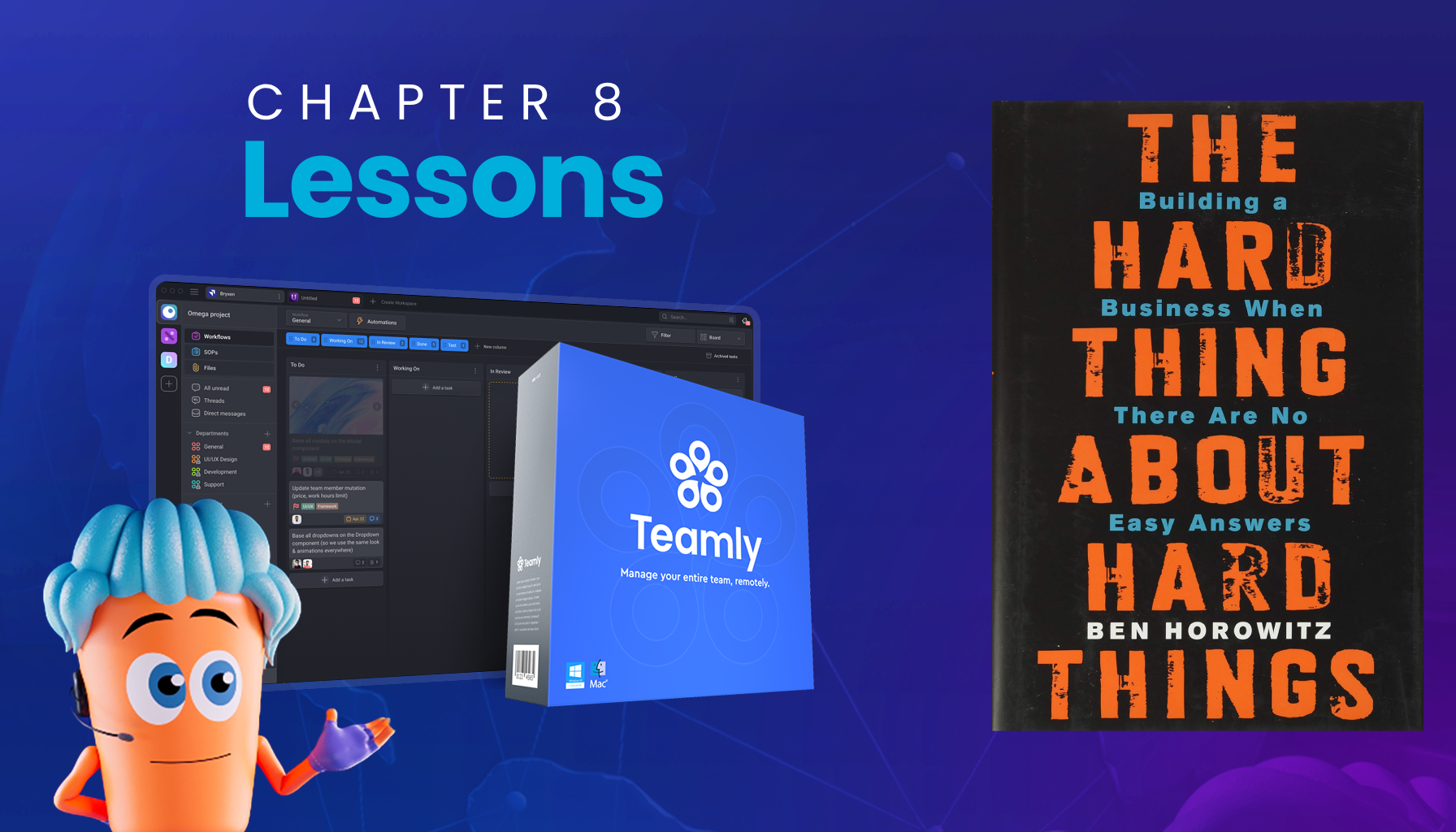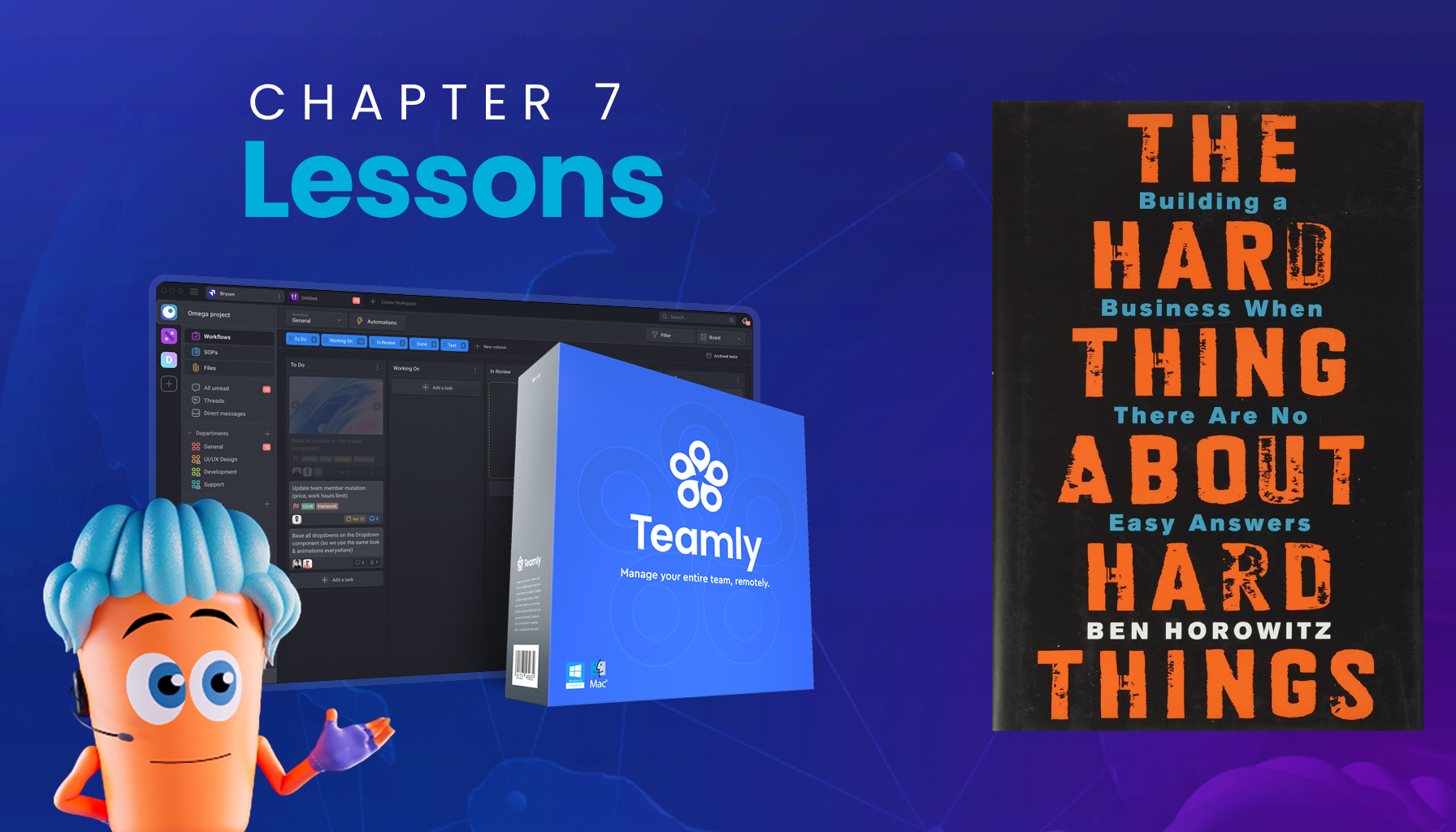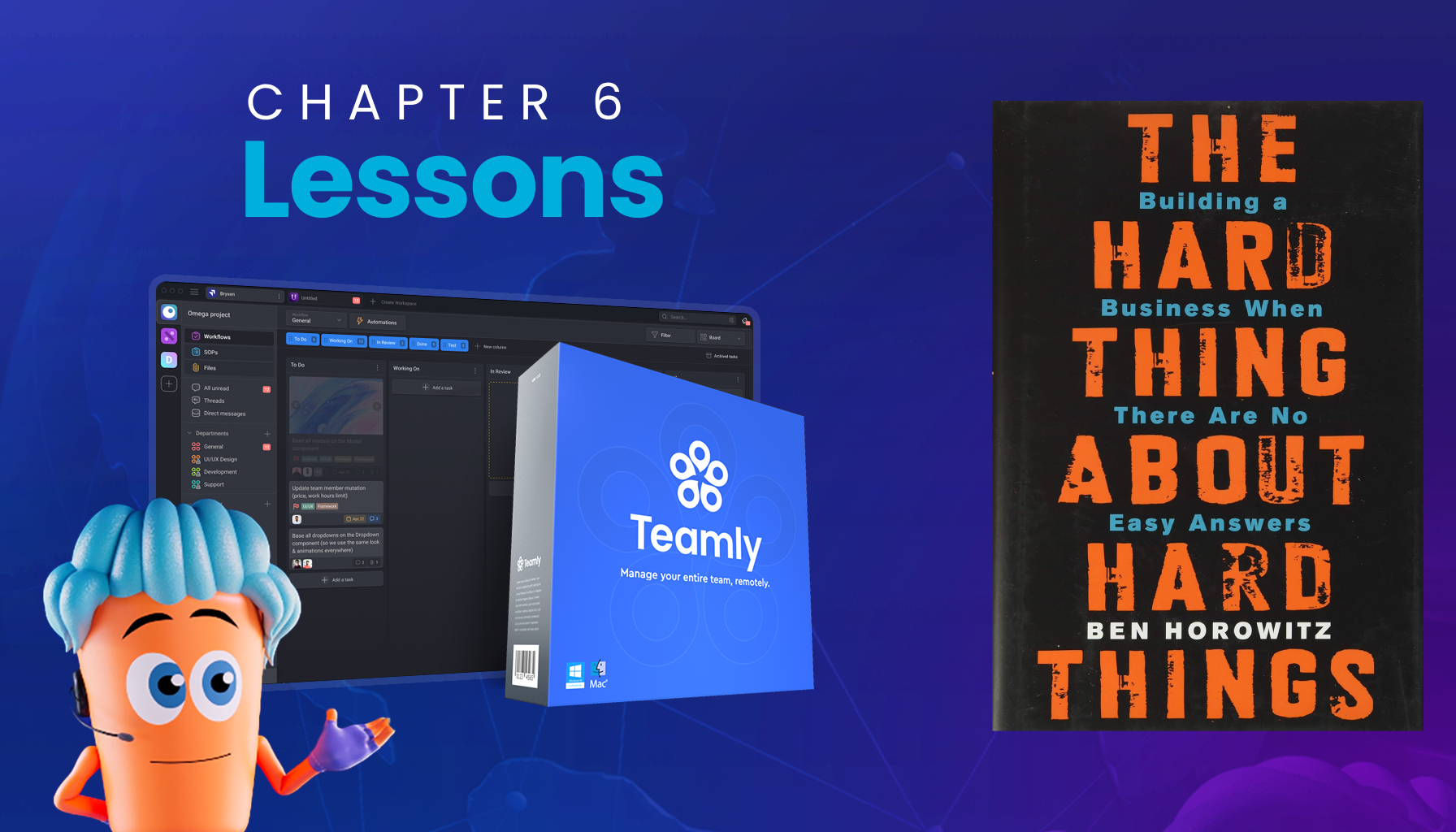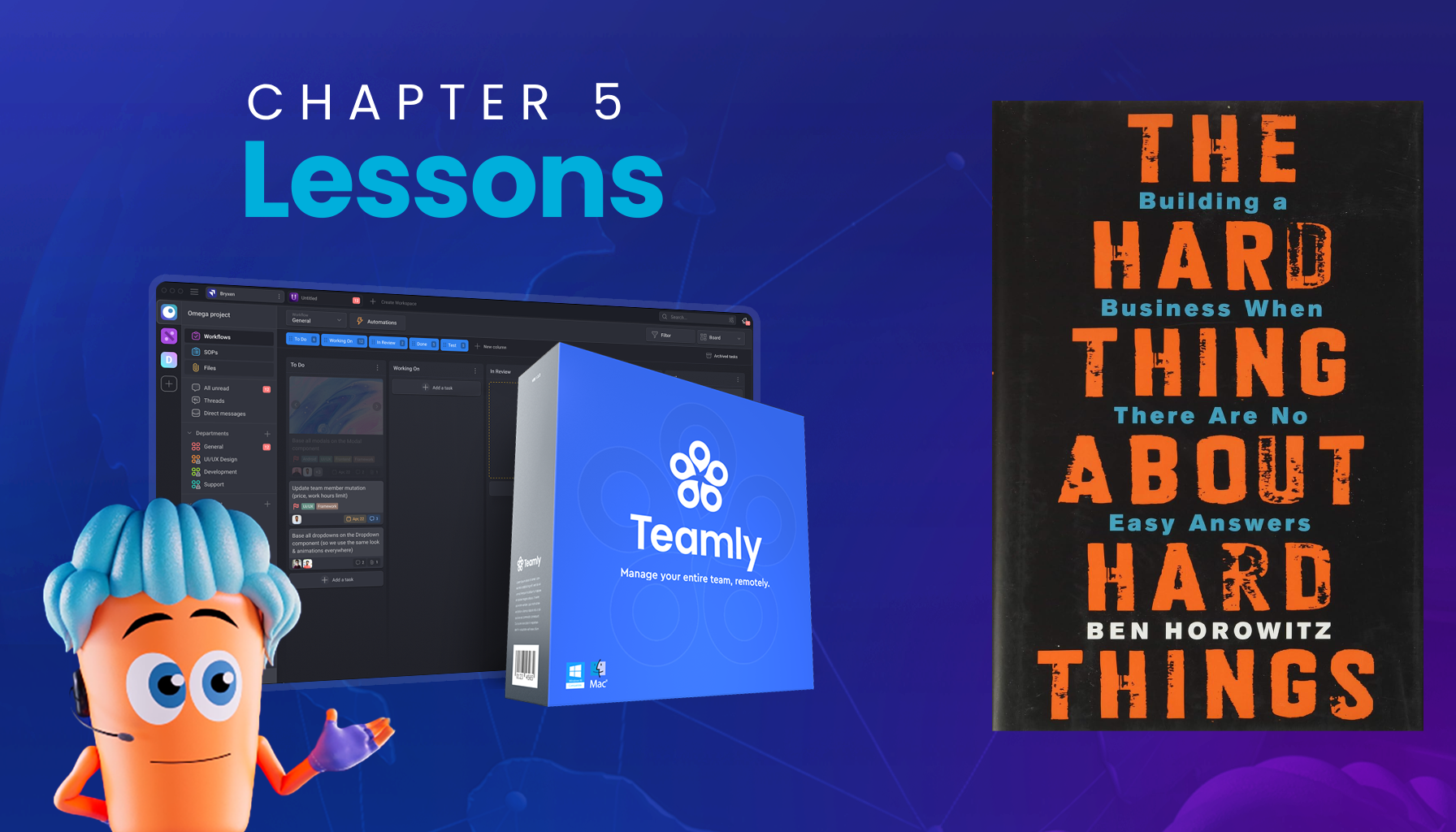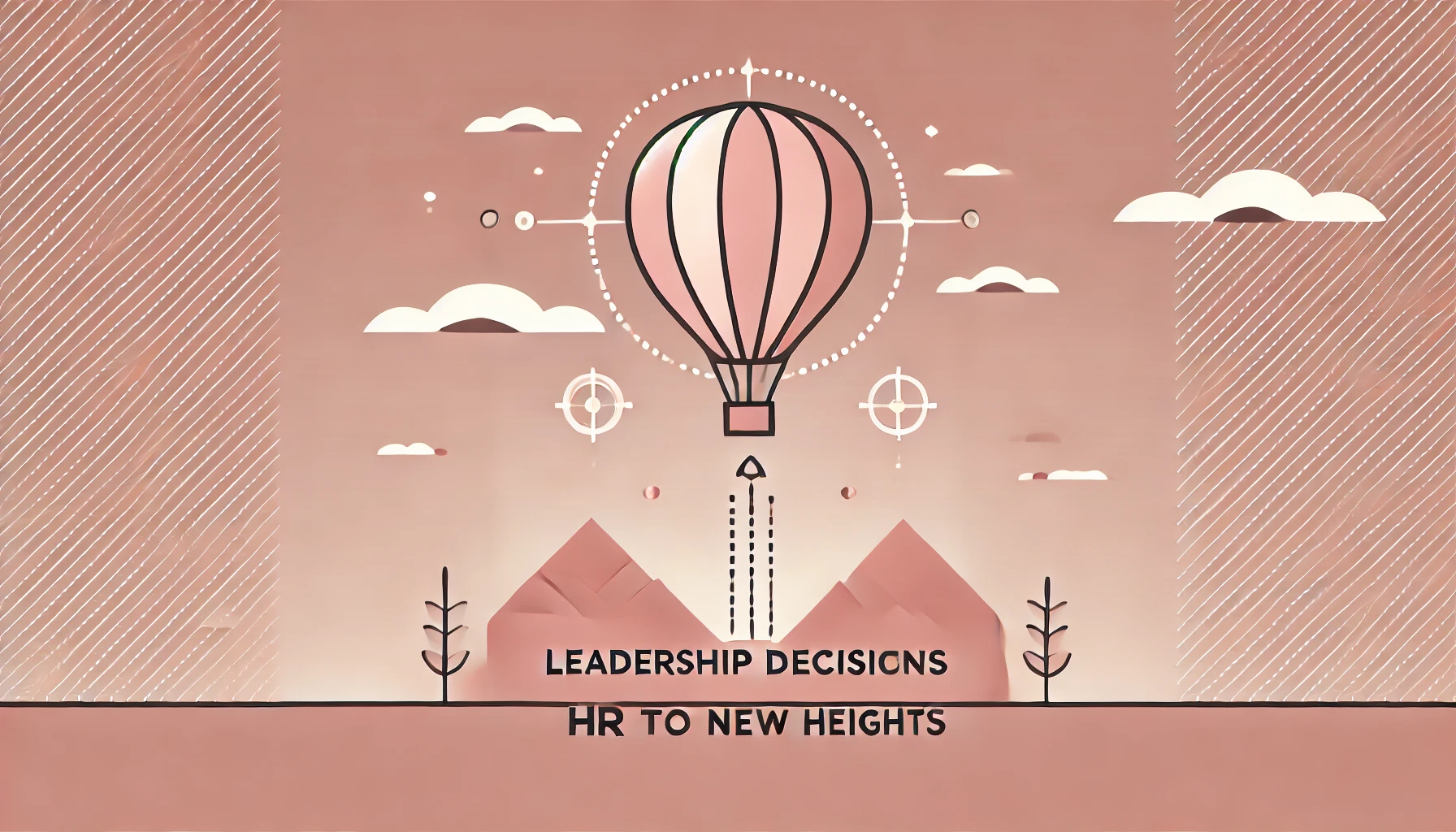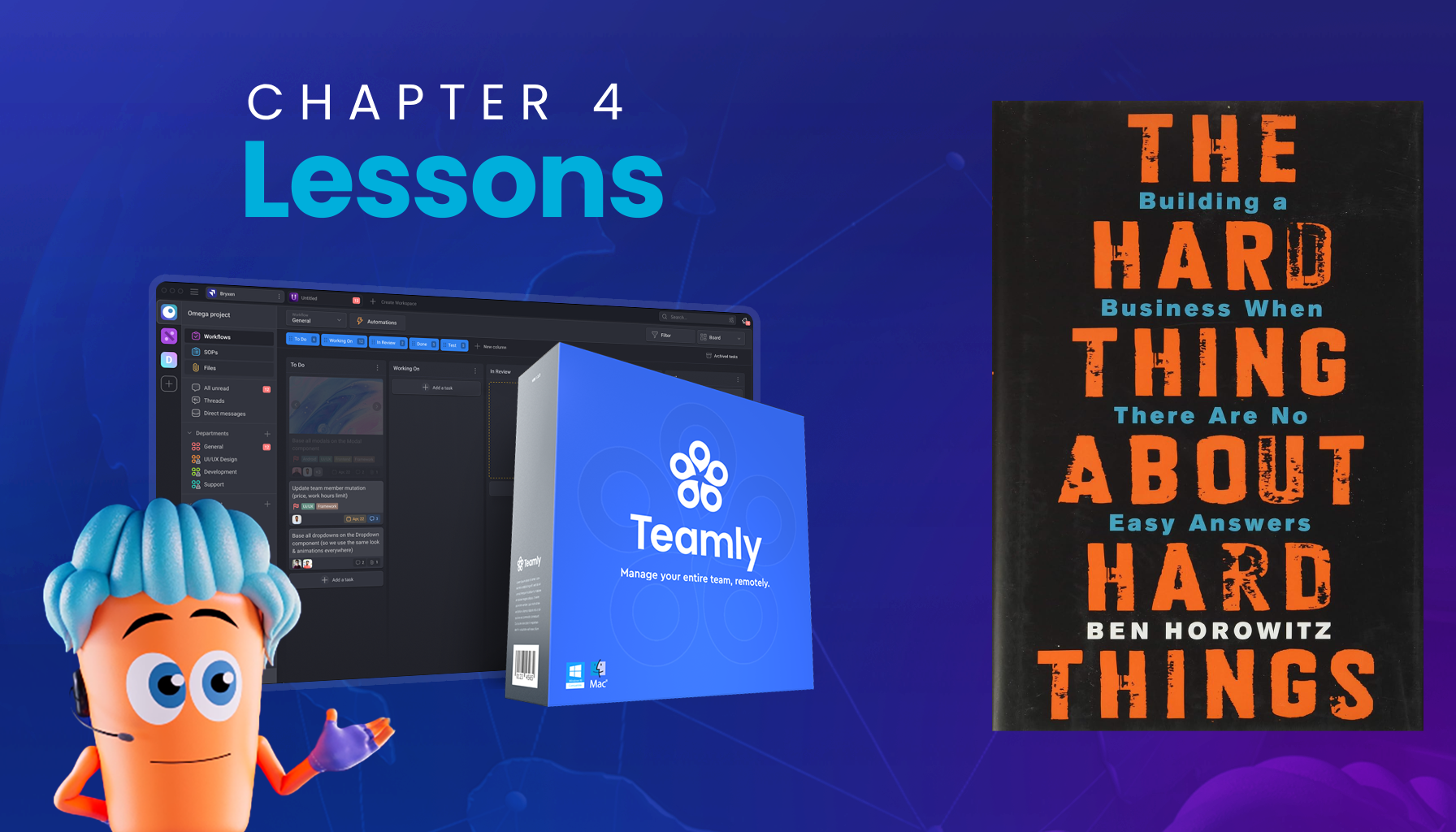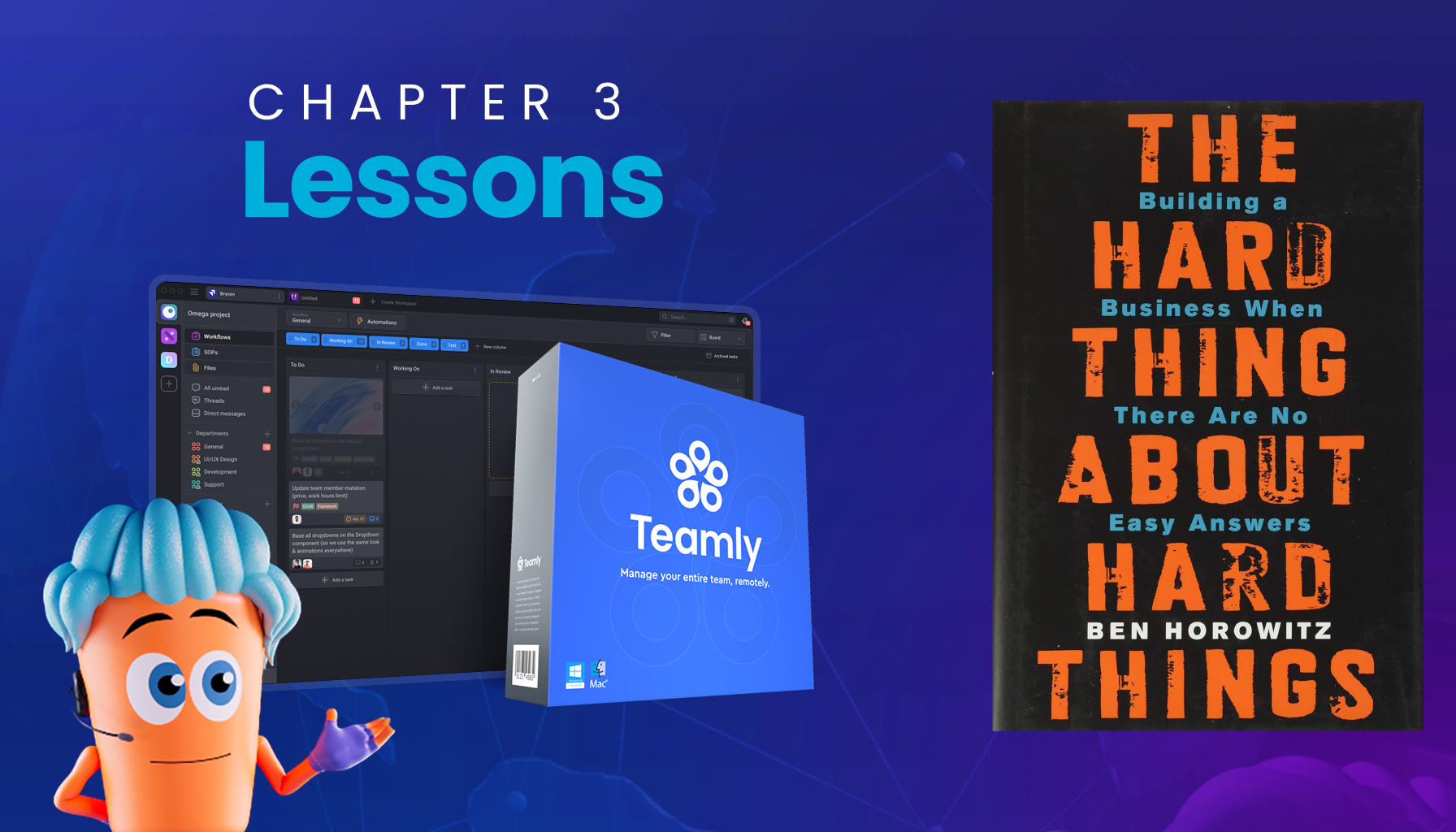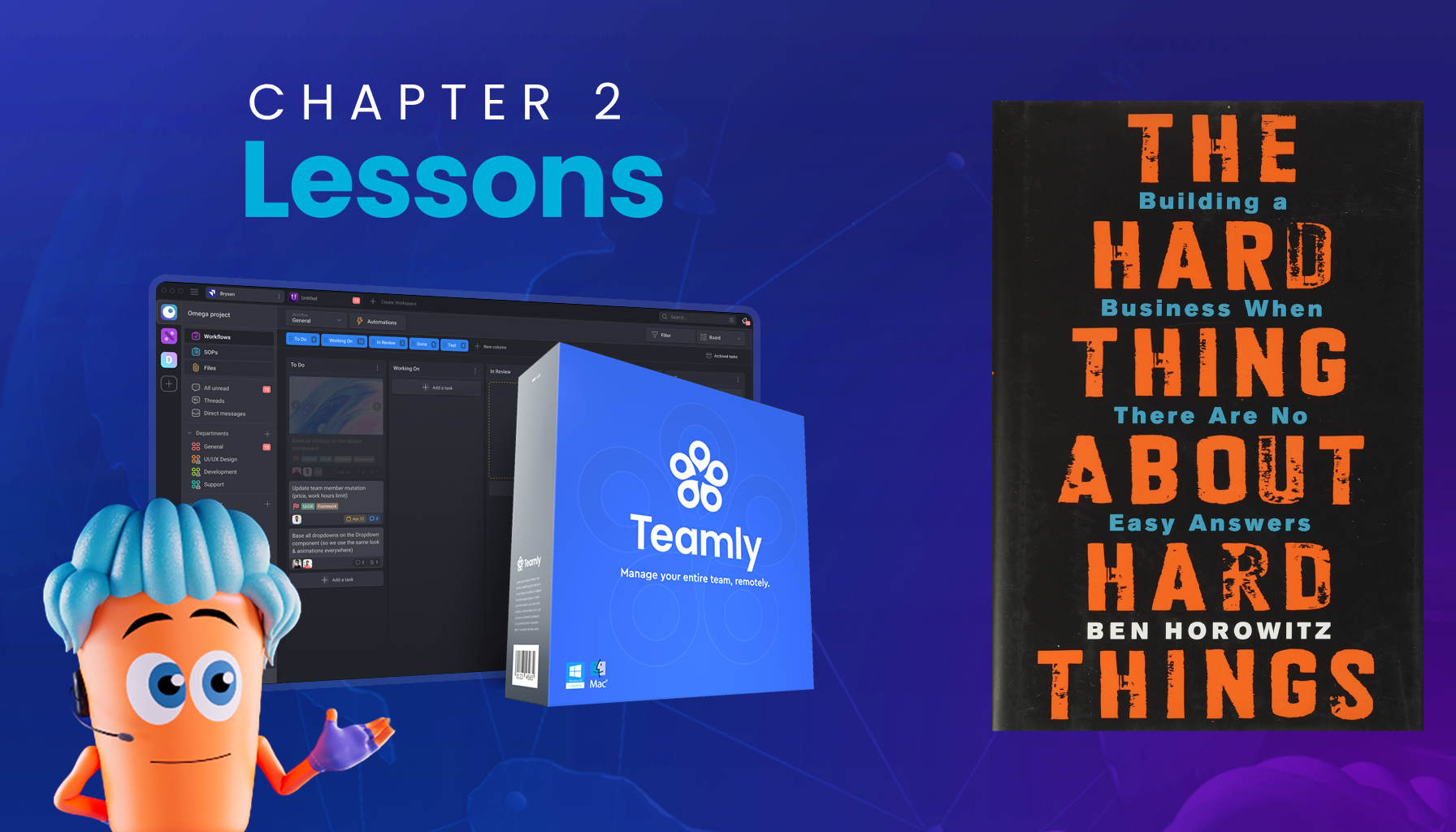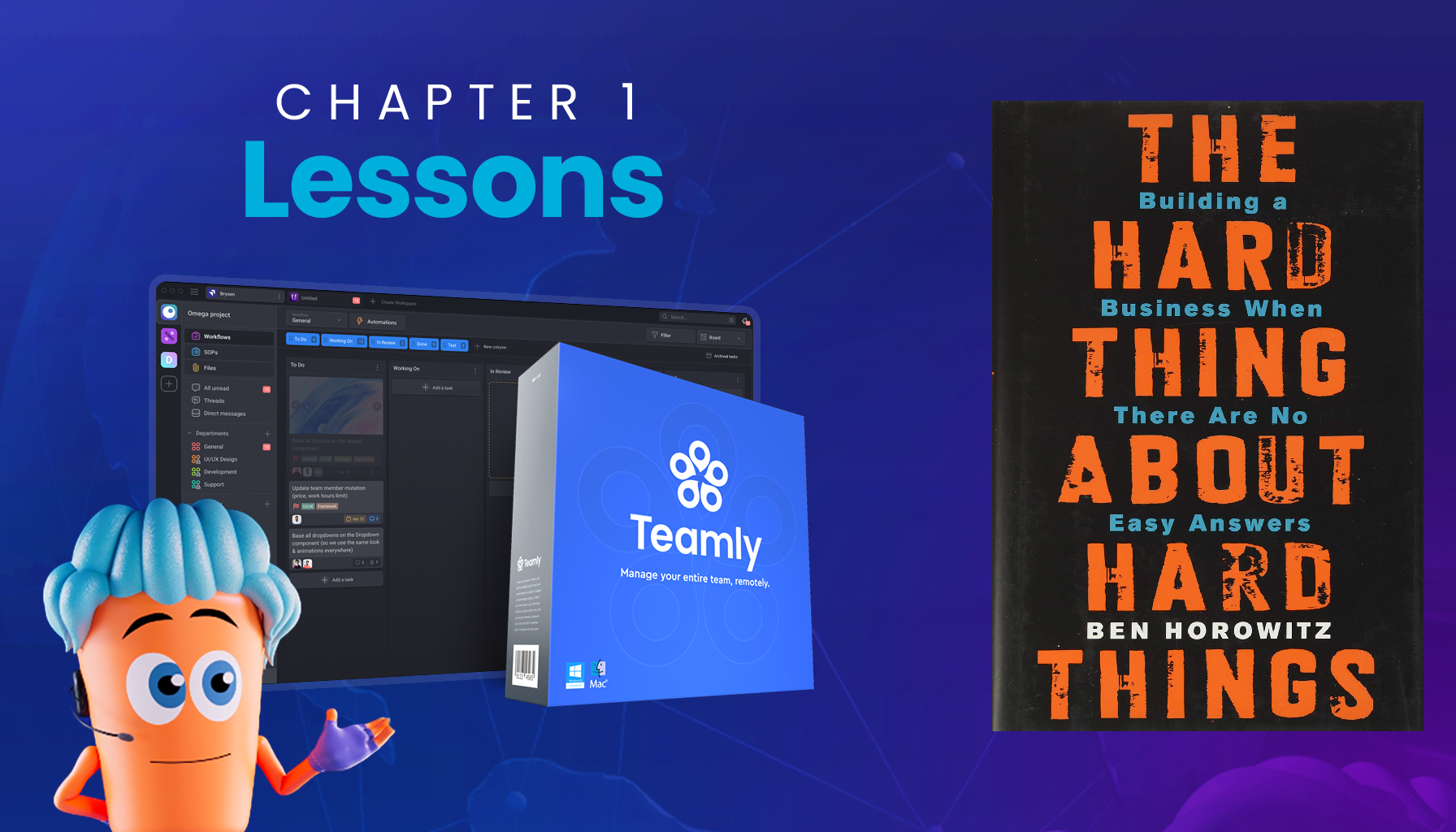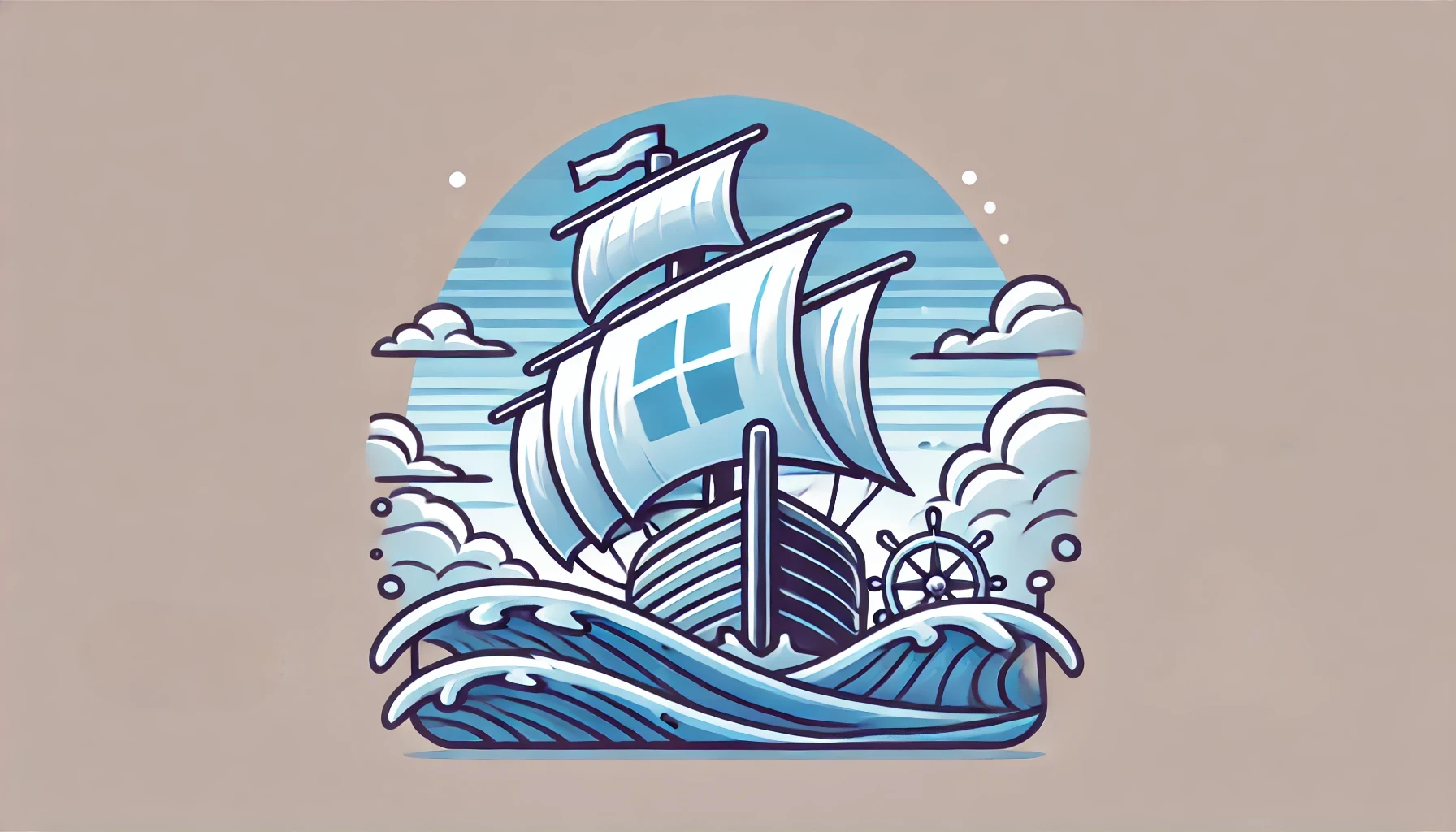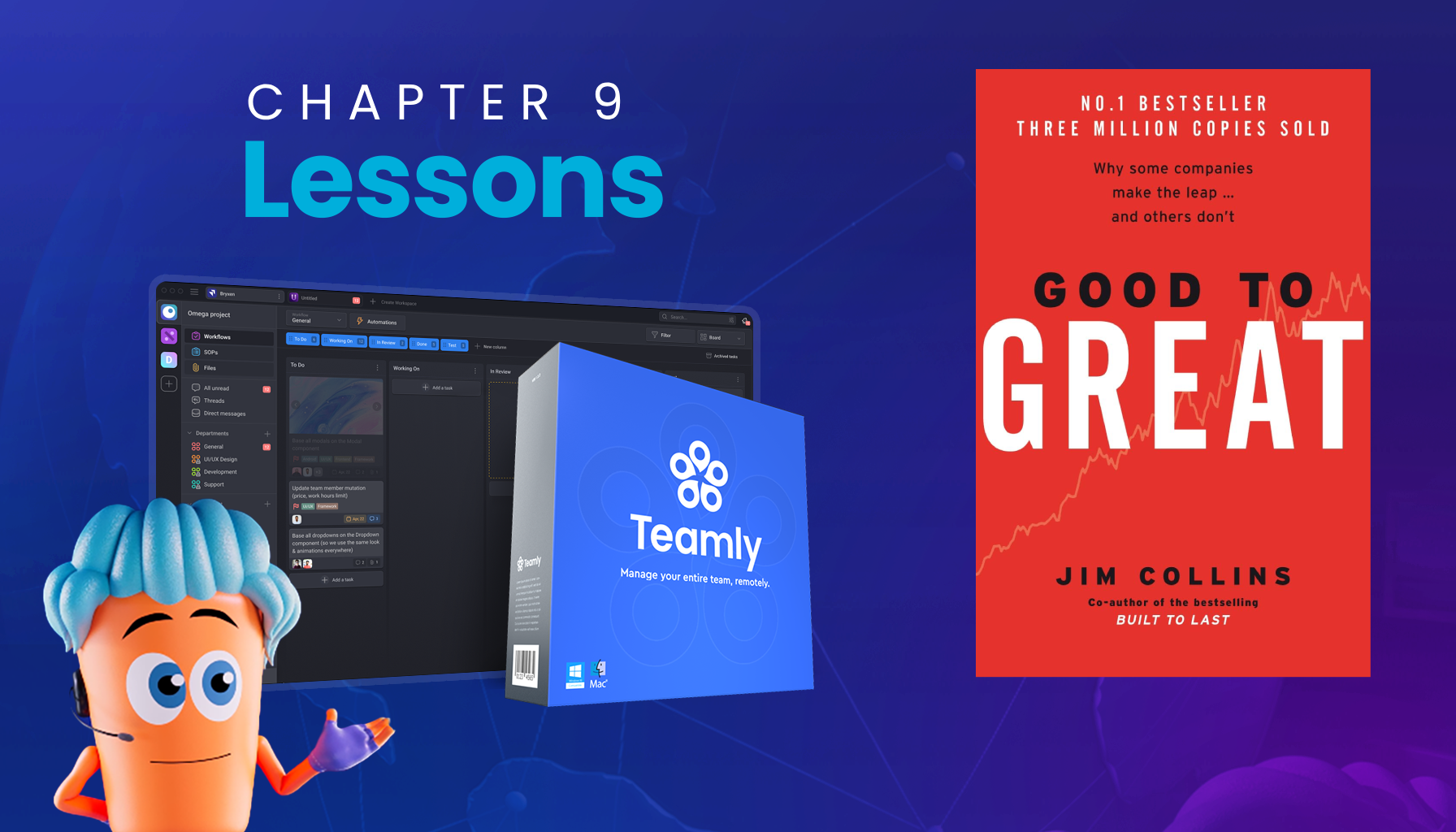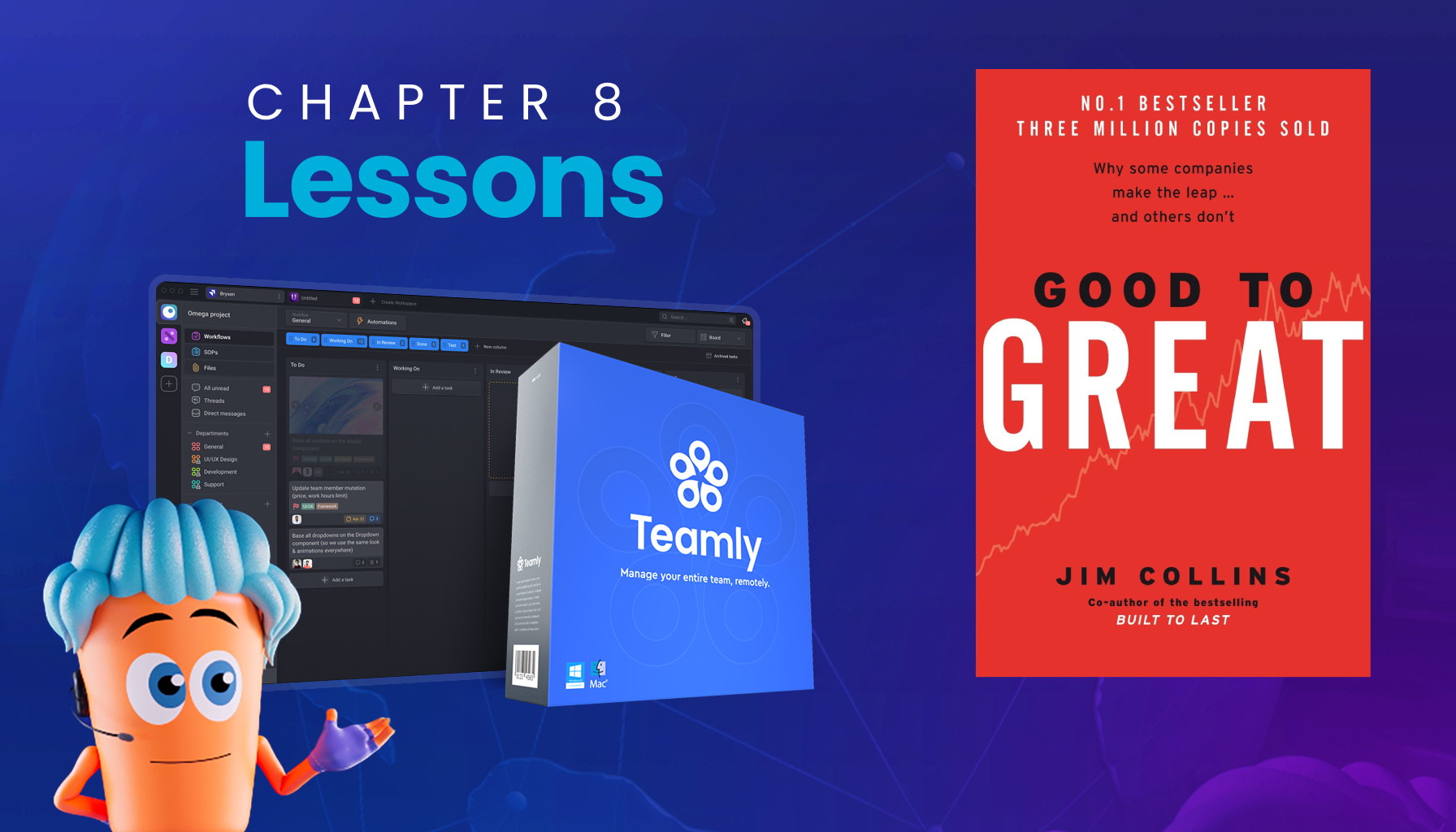In Chapter 8, Horowitz pulls back the curtain on some of the toughest decisions business leaders face, from balancing creativity with accountability to deciding when it’s time to sell a company.
This chapter is a masterclass in navigating the complex, often paradoxical nature of leadership.
One of the key themes in this chapter is how leaders can find balance—whether it’s between innovation and structure or between loyalty to individuals and responsibility to the company.
Entrepreneurs often find themselves in situations where there’s no easy answer, and that’s what makes Horowitz’s advice so valuable.
He dives deep into the difficult choices and shows that sometimes there’s no right or wrong decision, just the one you have to live with.
These are the lessons from Chapter 8 that every entrepreneur should take to heart, especially when navigating the inevitable challenges of scaling and sustaining a business.

Balancing Accountability and Creativity
One of the key dilemmas entrepreneurs face is how to balance creativity with accountability.
On one hand, companies need innovation to stay ahead of the curve. On the other hand, without structure and accountability, innovation can quickly lead to chaos. Horowitz calls this the “Accountability vs. Creativity Paradox,” and it’s something every leader must grapple with.
Employees who are given too much accountability without room to experiment will often feel stifled. They won’t take risks because the consequences of failure are too high. On the other hand, employees who are allowed to be creative without any accountability may lose focus, and the organization could start drifting off course.
Here’s how to strike the right balance:
- Empower employees to take risks, but ensure there are clear goals and objectives in place.
- Foster a culture where failure is seen as part of the learning process, not something to be punished.
- Use tools like Teamly to track project progress without micromanaging. Teamly helps teams maintain focus while allowing room for creativity.
Ultimately, leaders need to create an environment where employees feel safe to innovate, but they also need to know that results matter. It’s a tricky balance, but when done right, it can unleash incredible creativity while keeping the company on course.

The Power of Perspective: The Freaky Friday Technique
Conflict between teams is inevitable in any organization, but the way leaders handle those conflicts can make or break the company’s success.
In Chapter 8, Horowitz shares an insightful story about two teams in his company—Customer Support and Sales Engineering—that were constantly at odds. Each team had legitimate complaints, but neither was willing to see the other’s point of view. This led to mounting tension and a breakdown in communication.
Horowitz’s solution was simple but powerful: he swapped the roles of the two team leaders, forcing them to walk in each other’s shoes.
This technique, inspired by the movie Freaky Friday, gave both leaders a new perspective on the challenges the other team faced. Within a week, both executives had gained a newfound respect for the other team’s work, and the conflict was quickly resolved.
Here’s why this technique works:
- It forces team leaders to empathize with the challenges faced by other departments.
- It helps break down silos and encourages cross-functional collaboration.
- By stepping into someone else’s shoes, team members can gain a better understanding of the overall company goals.
While it’s not always possible to physically swap roles, the underlying lesson is that perspective matters. Encouraging teams to communicate more effectively and understand the challenges each department faces can go a long way in preventing conflicts and improving collaboration. Tools like Teamly can help facilitate this by making cross-team communication easier and more transparent.

Staying Great: How to Keep Talent World-Class
Hiring top talent is only the beginning. As Horowitz explains, the challenge isn’t just finding great people—it’s keeping them great as the company grows.
In the early stages, the qualities that make an executive successful may no longer be relevant as the company scales. The role of an executive often changes dramatically as the business evolves, and the person who was perfect for the job at one stage may struggle to meet the demands of the next.
Horowitz emphasizes that it’s crucial for leaders to continuously evaluate their talent and make tough decisions when necessary.
This means being willing to let go of executives who can’t keep up with the company’s growth, even if they’ve been loyal or successful in the past.
Here’s how to ensure your team stays world-class:
- Don’t assume that past performance guarantees future success. Continuously evaluate talent based on the company’s current needs.
- Be willing to make tough decisions when someone can’t meet the new demands of their role.
- Loyalty to individuals is important, but it can’t come before loyalty to the company’s future success.
Keeping a team world-class requires constant vigilance and a willingness to adapt. Leaders who fail to address talent issues early risk allowing their company to stagnate.

When to Sell Your Company
One of the most difficult decisions a CEO can face is whether to sell their company. The stakes are incredibly high, and emotions often run deep. Horowitz offers a framework to help leaders navigate this decision: if you’re in a large, growing market and you have the potential to be number one, don’t sell. However, if your market is shrinking or you’re struggling to stay competitive, selling might be the best option.
He contrasts two examples to illustrate this point:
- Google, which wisely held out against early acquisition offers because the search market was enormous and they were well-positioned to dominate it.
- Pointcast, which passed up lucrative offers only to later collapse when their market shrank and they could no longer compete.
The key lesson here is that market dynamics play a huge role in determining whether it’s the right time to sell. CEOs must objectively evaluate their market and their company’s position within it to make the best decision for their future. Emotions should not drive this decision—it’s all about what’s best for the company.

Managing the Emotional Side of Entrepreneurship
Entrepreneurship is an emotional journey, and nowhere is that more evident than when deciding whether to sell a company. Horowitz highlights the internal conflict many founders face—on one hand, they want to continue building and growing their business, but on the other hand, selling could provide financial security and freedom.
Horowitz offers practical advice for managing the emotional rollercoaster that often comes with running a company:
- Pay yourself a salary: Ensuring financial stability allows founders to make decisions based on what’s best for the business, not their personal financial needs.
- Be transparent with your team: Employees will inevitably ask, “Is the company for sale?” Be honest about the company’s future plans to avoid eroding trust.
- Keep emotions in check: When it comes to big decisions like selling, emotions can cloud judgment. Focus on what’s best for the company, not
Focus on what’s best for the company, not personal feelings. Navigating these emotional waters requires a clear, focused mindset and a strong support system within the leadership team.
The journey of an entrepreneur is fraught with tough choices and emotional upheavals, but armed with the right strategies and insights, such as those provided by Ben Horowitz in ‘The Hard Thing About Hard Things,’ leaders can steer their companies through turbulent waters with confidence and foresight.
This book not only offers invaluable lessons on overcoming the inherent challenges of entrepreneurship but also serves as a guide for personal and professional growth.
Ready to tackle the hard things on your entrepreneurial journey? Dive deeper into Ben Horowitz’s essential guide by picking up your copy on Amazon.
